On April 23rd we celebrate the Day of the Book and Language, paying tribute to two great authors of world literature: Don Miguel de Cervantes Saavedra, and William Shakespeare.
Therefore, I am encouraged to suggest two movies that were based on literary works.
The first one will be William Shakespeare's Romeo + Juliet (1996) based precisely on William Shakespeare's immortal play "Romeo and Juliet". The second brief review I will do will be of the movie "Como agua para chocolate" (1992) based on the novel by Laura Esquivel.

Sources: piqsels, pixabay

ABAJO EN ESPAÑOL
William Shakespeare's Romeo + Juliet (1996)
It was directed by Baz Luhrmann and is about the tragic love between Romeo and Juliet amidst the hatred of their families: the Montagues and the Capulets.
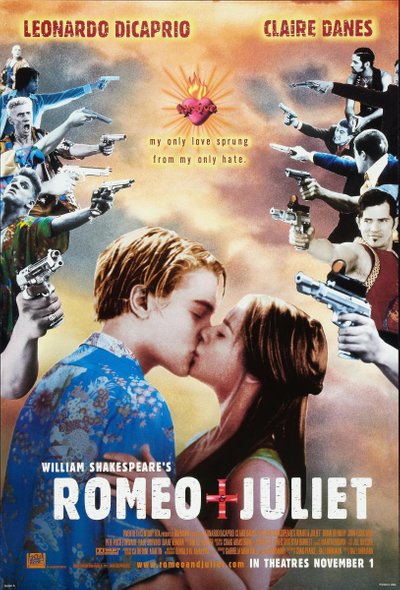
Source: Filmaffinity
In advance I will tell you that this movie surprised me for its modernity. The plot is the same as Shakespeare's literary classic, but the film seeks to bring young people closer to the cinema, and from my point of view, they did it in a masterful way.
The literary work, and the film present notable differences and that enriched the filmic approach.
For example, Shakespeare places the lovers in Verona (Italy) while the film creates "Verona Beach" which is a fictitious place. In this way, the film begins with a lot of strength because this love story is anywhere on the planet.
For the making of Romeo + Juliet, Leonardo DiCaprio was cast in the lead role. In that year, this actor had already starred in What's Eating Gilbert Grape, and was emerging as a young actor with a lot of potential.
The co-star was Claire Danes as Juliet Capulet. This girl had just won the Golden Globe in the series "My So-Called Life" and had participated in the movie "Little Women" which was her start on the big screen.
In other words, they were looking for actors who had a lot of momentum in their film careers and who could attract viewers.
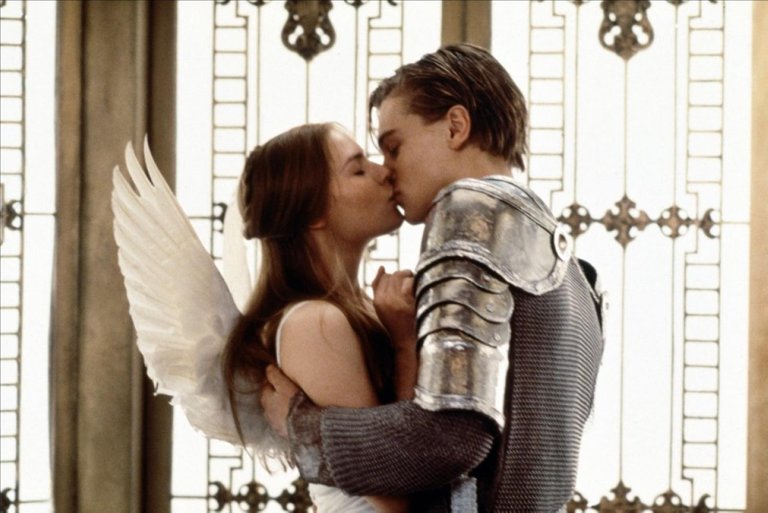
Source: Filmaffinity
What do I like most about Romeo + Juliet?
First, and most importantly, the parley and dialogue are from William Shakespeare's original play.
Second, the strategy of modernizing the weapons of war. Shakespeare was writing about swords and in the movie it's pistols and rifles.
Third, the Montagues and Capulets (the feuding families) in the film are presented as businessmen of the twentieth century (here we are even talking about mafias and drug trafficking).
Fourth, the excellent soundtrack by Nelle Hooper and Marius de Vries.
So, what are we going to find? With a film where two family gangs are engaged in a war that never seems to end but when they speak their language is from the sixteenth century. Frankly, I always found this aesthetic twist fascinating.
Needless to say, the costumes for the party and the costumes in general are also set in the 20th century.
If a young person has not yet read Romeo and Juliet I think the staging of this film may encourage them to read the literary classic.


Como agua para chocolate (1992)
This film was directed by Alfonso Arau based on the novel by Mexican writer Laura Esquivel. It's worth mentioning that Esquivel herself wrote the script for the film.
In the starring roles were Marco Leonardi as Pedro, Lumi Cavazos as Tita, Regina Torné as Mamá Elena, Ada Carrasco as Nacha, and Pilar Aranda as Chencha.
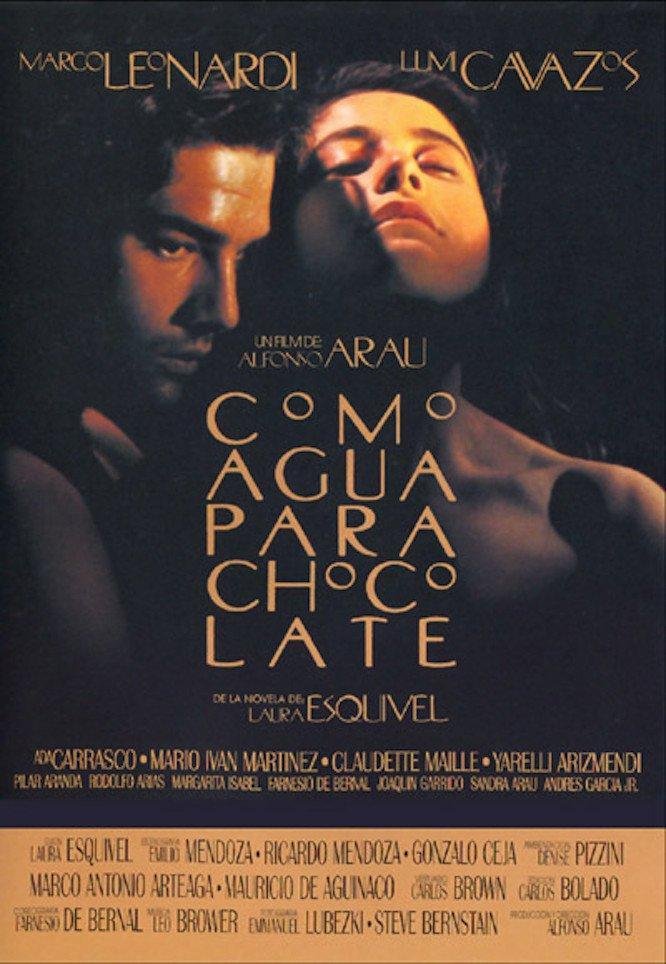 Source: filmaffinity
Source: filmaffinity
The plot is a story of a love affair during the Mexican Revolution. Tita and Pedro love each other but her mother Mamá Elena decides that Pedro should marry another of her daughters and that Tita should live to take care of her until her death.
Pedro accepts the agreement to marry Rosaura (Tita's older sister) and he says it was to be close to Tita. While Tita suffers for the secret love and for her sister's betrayal of accepting this marriage knowing that Pedro was in love with Tita.
This story is spiced with the Mexican culinary culture that is itself the common thread of the novel and the film.
Tita expresses herself through food and the invention of recipes that speak of her feelings. In the book, the recipes for the meals Tita prepares appear as if it were a cookbook. The film simply offers a visual rejoicing of Mexican gastronomy.
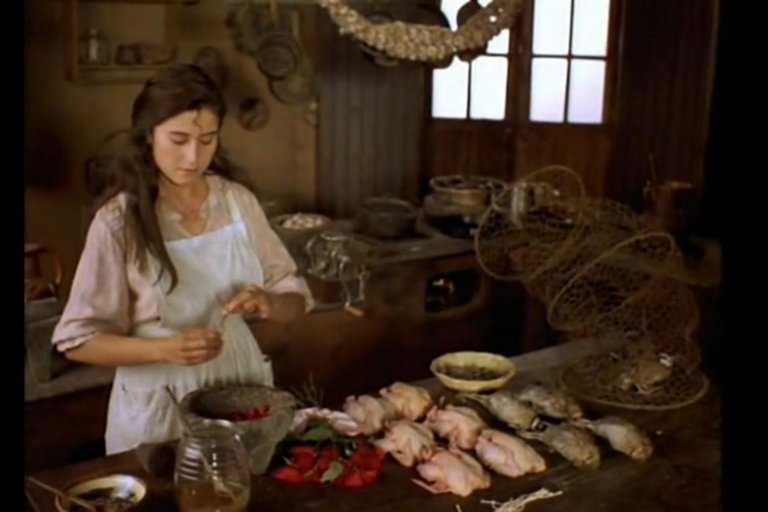
Source: Filmaffinity
As you may have noticed, both the book and the movie are in Spanish.
A detail that I was forgetting is the music by Leo Brouwer, which was delicious to apply a gastronomic term, hahahaha.
Laura Esquivel's novel has the peculiarity of approaching the style of magical realism. It is written in 12 chapters, whose names are the months of the year and the name of a cooking recipe. In addition, at the beginning of each chapter there are explanations on how to prepare them.
Obviously, the film is not divided into chapters. It narrates the main plot and tries to visualize the metaphors of Tita's dishes; sometimes it succeeds.
The film does not work the literary traps, of which there are several. That is to say, you can't always translate literature to film.
From this film I really liked the return of good Mexican cinema, and the fact that the public, in general, also returned to literature.
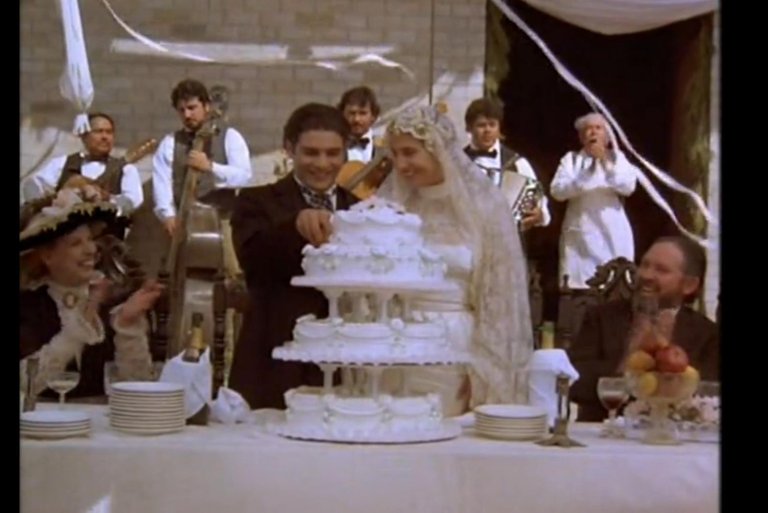
Source: Filmaffinity


ESPAÑOL
Hola hiveamigos amantes de las películas.
El próximo 23 de abril de celebra el Día del Libro y el Idioma, rindiendo homenaje a dos grandes autores de la literatura universal: Don Miguel de Cervantes Saavedra y William Shakespeare.
Por ello, estoy animada en sugerir dos películas que fueron basadas en obras literarias.
La primera será Romeo + Juliet (1996) basada precisamente en la obra inmortal de William Shakespeare “Romeo y Julieta”. Y la segunda breve reseña que haré será de la película Como agua para chocolate (1992) basada en el libro de Laura Esquivel.


Romeo + Juliet (1996)
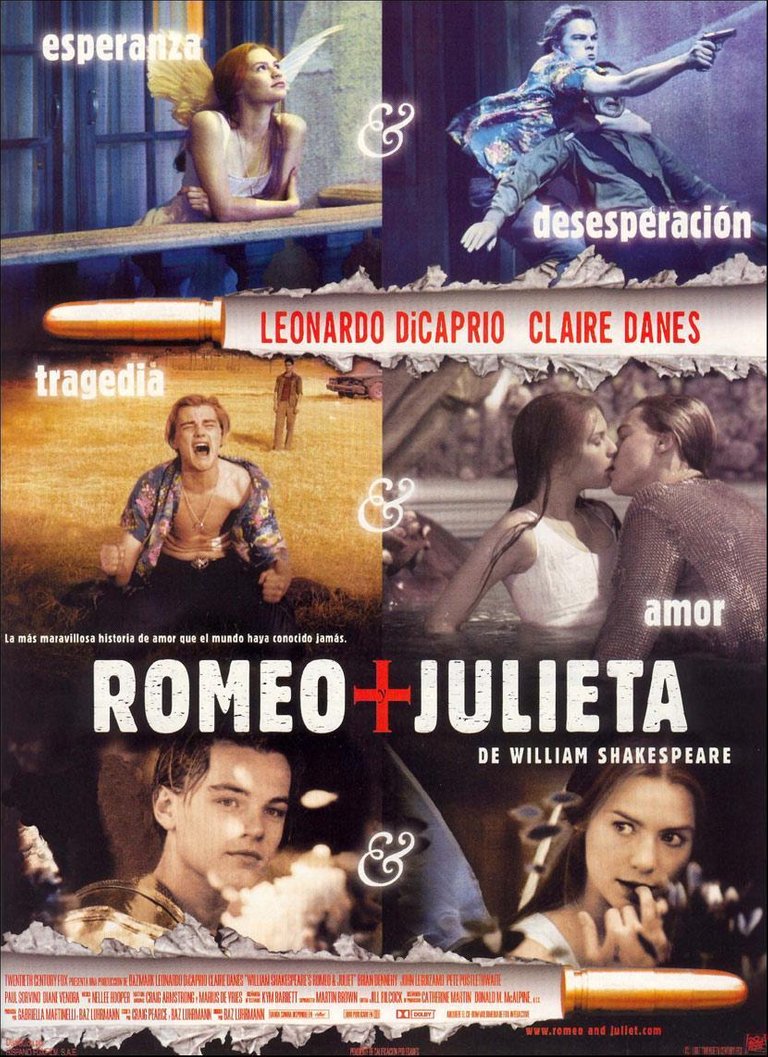 Fuente: filmaffinity
Fuente: filmaffinity
Fue dirigida por Baz Luhrmann y trata del trágico amor entre Romeo y Julieta en medio del odio de sus familias: los Montesco y los Capuleto.
De avanzada les diré que esta película me sorprendió por su modernidad. El argumento es el mismo que el clásico literario de Shakespeare pero en la película se buscó el acercamiento de los jóvenes al cine, y desde mi punto de vista lo hicieron de manera magistral.
La obra literaria y la película presentan diferencias notables y eso enriqueció el planteamiento fílmico.
Por ejemplo, Shakespeare ubica a los enamorados en Verona (Italia) mientras que en la película se crea “Verona Beach” que es un lugar ficticio. De esta manera, el filme inicia con mucha fuerza pues esta historia de amor es en cualquier lugar del planeta.
Para la realización de Romeo + Juliet contrataron a Leonardo Di Caprio en el rol principal. En ese año, este actor ya había protagonizado ¿A quién ama Gilbert Grape? Y se perfilaba como un actor joven con mucho potencial.
La coestrella fue Claire Danes como Julieta Capuleto. Esta chica para aquellos años, venía de ganar el Globo de Oro en la serie “Es mi vida” y había participado en la película “Mujercitas” que fue su inicio en la pantalla grande.
Es decir, se buscaron a actores que se vislumbraban con mucho impulso en sus carreras cinematográficas y que podían atraer espectadores.

Fuente: filmaffinity
¿Qué es lo que más me gusta de Romeo + Juliet?
Primero, y lo más importante, el parlamento y los diálogos son de la obra original de William Shakespeare.
Segundo, la estrategia de modernización de las armas de guerra. Shakespeare escribía sobre espadas y en la película son pistolas y fusiles.
Tercero, los Montesco y los Capuleto (las familias peleadas) en la película se presentan como hombres de negocios del siglo XX (aquí estamos hablando incluso de mafias y narcotráfico).
Cuarto, la excelente banda sonora de Nelle Hooper y Marius de Vries.
Entonces, con qué nos vamos a encontrar? Con una película en donde dos bandas familiares están enfrentadas en una guerra que parece no terminar nunca pero cuando hablan su lenguaje es del siglo XVI. Francamente, este giro estético me pareció siempre fascinante.
No está demás decir que, los disfraces para la fiesta y el vestuario en general también están ubicados en el siglo XX.
Si un joven aún no ha leído Romeo y Julieta yo pienso que la puesta en escena de esta película lo puede animar a leerse el clásico literario.


Como agua para chocolate (1992)

Fuente: culinaeros
En las actuaciones estelares estuvieron Marco Leonardi como Pedro, Lumi Cavazos como Tita, Regina Torné como Mamá Elena, Ada Carrasco como Nacha y Pilar Aranda como Chencha.
El argumento es una historia de un amor en tiempos de la revolución mexicana. Tita y Pedro se aman pero su madre Mamá Elena decide que Pedro se debe casar con otra de sus hijas y que Tita debe vivir para cuidarla hasta su muerte.
Pedro acepta el convenimiento de casarse con Rosaura (la hermana mayor de Tita) y dice él que fue para estar cerca de Tita. Mientras que Tita sufre por el amor secreto y por la traición de su hermana de aceptar ese matrimonio a sabiendas de que Pedro estaba enamorado de Tita.
Esta historia se adereza con la cultura culinaria mexicana que es en sí el hilo conductor de la novela y de la película.
Tita se expresa a través de la comida y de la invención de recetas que hablan de sus sentimientos. En el libro, las recetas de las comidas que elabora Tita aparecen como si fuera un libro de cocina. En la película sencillamente se ofrece un regocijo visual de la gastronomía mexicana.
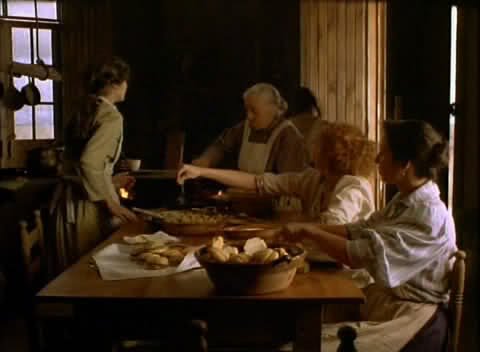
Fuente: postresoriginales
Como habrán podido percibir, tanto el libro como la película son obras en español.
Un detalle que se me estaba olvidando es música que estuvo a cargo del cubano Leo Brouwer y que estuvo deliciosa para aplicar un término gastronómico, jajajaja.
La novela de Laura Esquivel tiene la peculiaridad se acercarnos al estilo de realismo mágico. Está escrita en 12 capítulos, cuyos nombres son los meses del año y el nombre de una receta de cocina. Además, al inicio de cada capítulo se hacen explicaciones de cómo prepararlas.
Obviamente, la película no está dividida en capítulos. Narra el argumento principal e intenta visualizar las metáforas de los platillos de Tita; en ocasiones se logra.
La película no trabaja las trampas literarias, que vale decir existen varias. Es decir, no siempre puedes trasladar la literatura al cine.
De esta película me gustó mucho la vuelta del buen cine mexicano y el hecho de que el público, en general, también regresó a la literatura.


Thanks for reading / Gracias por leer
Your comments are welcome / Bienvenidos sus comentarios
Infinite greetings! - ¡Saludos infinitos!
